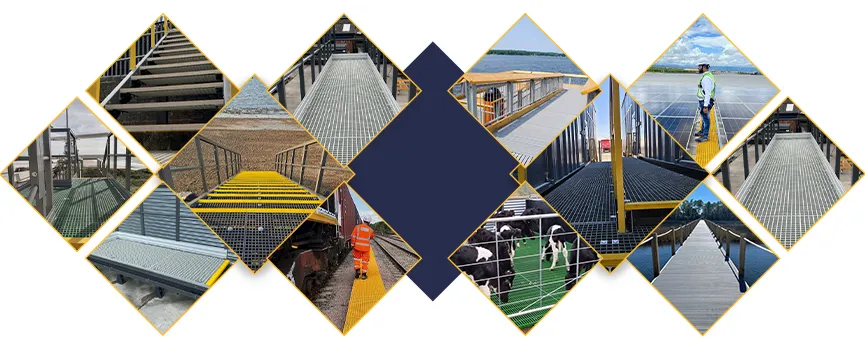loading...
- No. 9, Xingyuan South Street, Dongwaihuan Road, Zaoqiang County, Hengshui, Hebei, China
- admin@zjcomposites.com
- +86 15097380338
- Welcome to visit our website!
Innovative Solutions for Durable and Stylish Prefabricated Handrail Systems
The Benefits of Prefabricated Handrails in Modern Construction
In recent years, the construction industry has seen a significant shift towards the use of prefabricated components, and handrails are no exception. Prefabricated handrails, designed and manufactured off-site, offer a multitude of advantages that enhance safety, efficiency, and aesthetic appeal in various construction projects.
Safety First
One of the primary benefits of prefabricated handrails is the enhanced safety they provide. Handrails are crucial in preventing accidents and ensuring that people can navigate stairs, balconies, and walkways without fear of falling. By using prefabricated handrails, contractors can ensure that these structures meet rigorous safety standards, as they are manufactured in controlled environments where quality can be closely monitored. Each handrail is designed according to national codes and regulations, ensuring maximum safety for users.
Time and Cost Efficiency
Prefabricated handrails can significantly reduce construction time and costs. Traditional handrails often require on-site fabrication, which can lead to prolonged construction schedules. With prefabricated options, the production occurs simultaneously with other construction activities, allowing for a more streamlined workflow. Once the structure is ready, the handrails can be installed quickly and efficiently, minimizing labor costs and the time needed to complete the project. This efficiency is particularly beneficial in large-scale projects, where delays can be costly.
Consistent Quality
Quality control is a crucial aspect of construction, and prefabricated handrails offer a solution to maintain consistency. Each component is produced using the same materials and processes, leading to uniformity in strength, durability, and appearance. This consistency not only enhances the overall quality of the construction but also simplifies inspection processes, as the standards are pre-set and well-documented.
prefabricated handrail

Aesthetic Versatility
Prefabricated handrails come in a variety of styles, materials, and finishes, allowing for great versatility in design. Whether a project calls for sleek modern lines or a more traditional look, prefabricated options can cater to diverse architectural requirements. Materials such as stainless steel, aluminum, glass, and wood can be combined in innovative ways, enabling architects and designers to create unique and visually appealing handrail systems that complement the overall aesthetics of the building.
Sustainability Considerations
With the growing emphasis on sustainability in construction, prefabricated handrails can contribute positively to eco-friendly practices. Since these components are manufactured off-site, there is less waste generated during the production process. Additionally, many manufacturers are focusing on sustainable materials, reducing the environmental impact of construction. By integrating prefabricated handrails made from recycled or eco-friendly materials, builders can contribute to achieving green building certifications and improving the overall sustainability of their projects.
Customization and Flexibility
Another advantage of prefabricated handrails is the ease of customization. Modern manufacturing technologies allow for bespoke solutions to meet specific project needs. Whether it's adjusting the height, adding personalized finishes, or incorporating unique design elements, prefabricated handrails can be tailored to suit particular client specifications without significant additional costs or time delays.
Conclusion
In conclusion, prefabricated handrails present a variety of benefits that make them an attractive option for modern construction projects. With their focus on safety, efficiency, quality consistency, aesthetic flexibility, sustainability, and customization, prefabricated handrails are revolutionizing how builders approach safety features in residential, commercial, and industrial settings. As the construction industry continues to evolve, embracing innovative solutions like prefabricated handrails will undoubtedly play a crucial role in creating safer, more efficient, and visually stunning environments. Investing in these engineered solutions not only enhances project outcomes but also demonstrates a commitment to quality and safety in construction.
-
The Rise of FRP Profiles: Strong, Lightweight, and Built to LastNewsJul.14,2025
-
SMC Panel Tanks: A Modern Water Storage Solution for All EnvironmentsNewsJul.14,2025
-
GRP Grating: A Modern Solution for Safe and Durable Access SystemsNewsJul.14,2025
-
Galvanized Steel Water Tanks: Durable, Reliable, and Ready for UseNewsJul.14,2025
-
FRP Mini Mesh Grating: The Safer, Smarter Flooring SolutionNewsJul.14,2025
-
Exploring FRP Vessels: Durable Solutions for Modern Fluid HandlingNewsJul.14,2025
-
GRP Structures: The Future of Lightweight, High-Performance EngineeringNewsJun.20,2025
